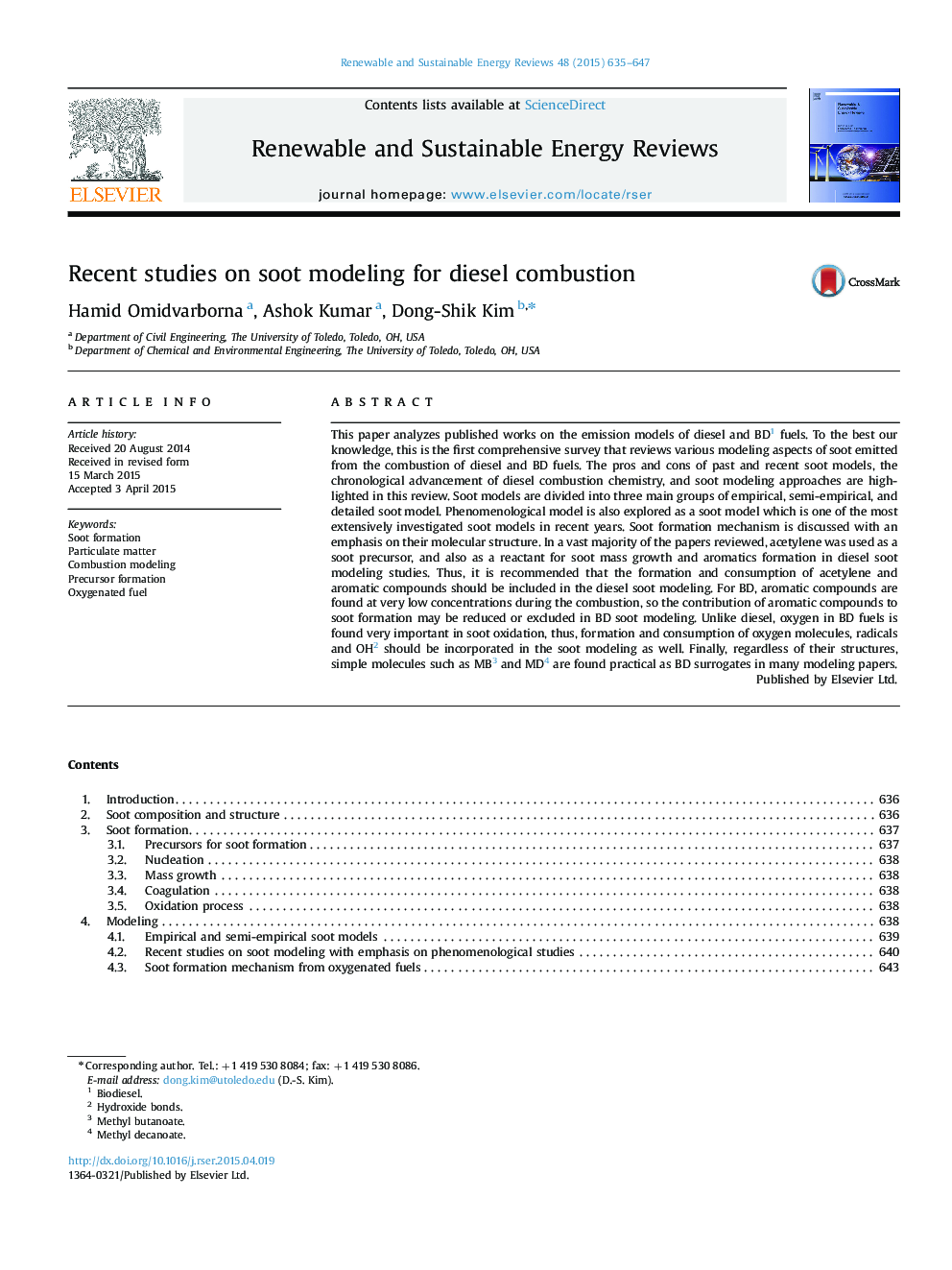| Article ID | Journal | Published Year | Pages | File Type |
|---|---|---|---|---|
| 8116521 | Renewable and Sustainable Energy Reviews | 2015 | 13 Pages |
Abstract
This paper analyzes published works on the emission models of diesel and BD1 fuels. To the best our knowledge, this is the first comprehensive survey that reviews various modeling aspects of soot emitted from the combustion of diesel and BD fuels. The pros and cons of past and recent soot models, the chronological advancement of diesel combustion chemistry, and soot modeling approaches are highlighted in this review. Soot models are divided into three main groups of empirical, semi-empirical, and detailed soot model. Phenomenological model is also explored as a soot model which is one of the most extensively investigated soot models in recent years. Soot formation mechanism is discussed with an emphasis on their molecular structure. In a vast majority of the papers reviewed, acetylene was used as a soot precursor, and also as a reactant for soot mass growth and aromatics formation in diesel soot modeling studies. Thus, it is recommended that the formation and consumption of acetylene and aromatic compounds should be included in the diesel soot modeling. For BD, aromatic compounds are found at very low concentrations during the combustion, so the contribution of aromatic compounds to soot formation may be reduced or excluded in BD soot modeling. Unlike diesel, oxygen in BD fuels is found very important in soot oxidation, thus, formation and consumption of oxygen molecules, radicals and OH2 should be incorporated in the soot modeling as well. Finally, regardless of their structures, simple molecules such as MB3 and MD4 are found practical as BD surrogates in many modeling papers.
Related Topics
Physical Sciences and Engineering
Energy
Renewable Energy, Sustainability and the Environment
Authors
Hamid Omidvarborna, Ashok Kumar, Dong-Shik Kim,
